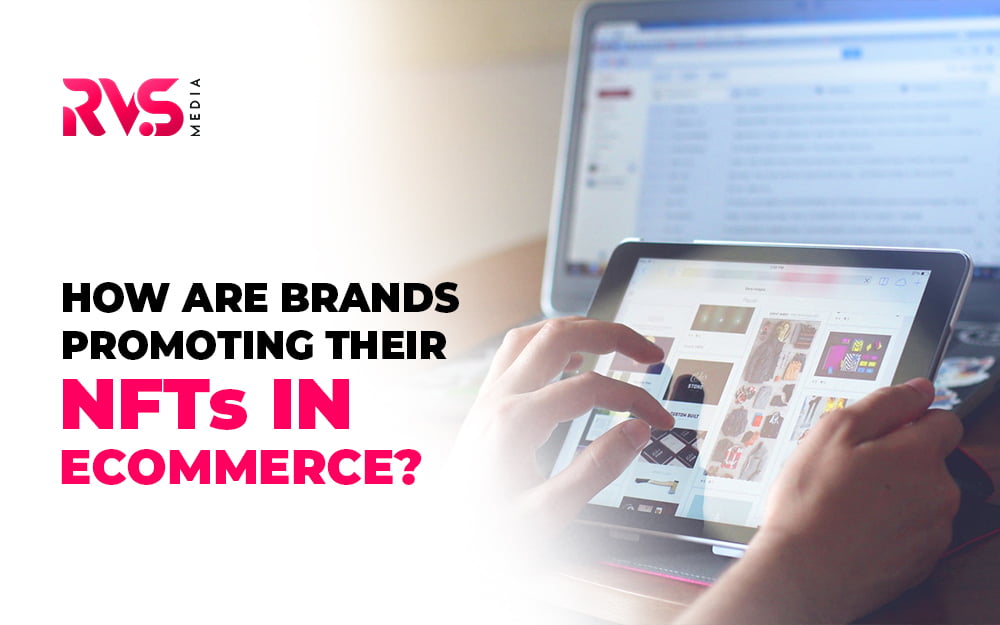
Estimated reading time: 6 minutes, 02 seconds
One of the biggest marketing trends for 2022 is non-fungible tokens (NFTs). The Merge, a digital artwork by Pak, is the most costly of these assets, fetching an eye-popping sum. In December 2021, a group of collectors paid $91.8 million for it, making it the most costly work by a living artist to date. According to JP Morgan, the entire market value of NFTs is $41 billion.
As a result, it’s no surprise that businesses are eager to get involved. Some people have thrown their support behind NFTs, while others are still testing the waters. Nevertheless, the trend is here to stay, and no one can ignore it.
Still, there’s a lot of uncertainty about what NFTs are and how they may benefit brands. With this tutorial, you can answer these questions and decide if NFTs are worth your time and money.
Among the businesses we’ll examine are Gucci, Barbie/Balmain, Stella Artois, and McDonald’s, all of whom are experimenting with NFTs in creative ways.
What are NFTs?
An NFT is a non-fungible token (often pronounced “en eff tee,” but a minority prefers “nifty”). In economics, the phrase “fungible” refers to an object that may be readily substituted for another of equal or greater value. For example, let’s say you want to swap a $10 bill for another $10 bill or some other object with a value we agree on.
In other words, non-fungible tokens (a unit of data) are unique and cannot be readily traced. Therefore, it can be purchased and sold for its value, but it cannot simply be switched for another token of the same worth.
It is impossible to modify the digital ledger in which NFTs are recorded (a blockchain) since it is spread among thousands of computers. As a result, the token’s owner owns the asset linked to an NFT.
This is critical because we can create infinitely perfect duplicates of any data in the digital world. If you take a million pictures of an image, they’ll all be similar to the first one. This is a problem for digital artists since scarcity produces value. To produce the value and uniqueness that art demands, NFTs play a key role.
The NFT applies to almost everything individuals wish to possess in today’s digital world. For example, a “digital perfume” named Look Labs was marketed as an NFT by a firm called Look Labs, and the New York Times has sold stories as NFTs.
However, the artwork itself is not saved on the blockchain, as should be noted. It’s not feasible to keep these data due to the enormous computing power required by blockchain technology. NFTs were originally designed to aid in acquiring real estate, not the trade of fine art. Its primary purpose is to store and allow smart contracts, which are computer programs that execute automatically when certain criteria are satisfied.
As a receipt of purchase and a document of ownership, the NFT serves as a connection to the original art file. If you’re a brand, it’s important to keep the present state of affairs from your viewpoint.
Seven strategies for using NFTs in your eCommerce company
To better understand NFTs and the benefits of eCommerce firms, we spoke with several specialists in this field.

Research and Development
It’s valuable to get insight into client thinking throughout the R&D process. For example, using NFTs, companies may reward consumers for taking part in surveys and beta-testing, or they can grant certain NFT holders the right to vote on the product development roadmap.
Chris Cantino, Partner at Colour Capital, recommends using this method to look for actionable information. NFTs may provide members early access to new products and even share any profits generated in certain cases.
Selling Digital Goods
The use of NFTs as a source of extra revenue? Isn’t that great? eCommerce firms may benefit from NFTs, whether they’re selling digital items on their own or as a supplement to a more traditional physical product.
With its Adam Bomb Squad NFTs, streetwear company The Hundreds sold out in only four days. Even yet, they’re not done yet. Co-founder Bobby Kim says they’re now looking at methods of incorporating NFTs into sponsored events.
Education and an Exceptional Client Experience
If you wished to be successful in 2021, you’d need to have clients who are so knowledgeable about your product that they easily onboard new customers. NFTs may be a great way to transform consumers into brand advocates, according to Chris Cantino’s latest proposal.
Special Access to Drops
It’s no secret that “Drop culture” has taken up in the previous several years. Long queues form outside of shops because of the false impression of scarcity they convey. The use of NFTs may assist an eCommerce business tell its narrative uniquely while also boosting the scarcity perspective. The use of NFTs can aid.
Pre-launch Products
Every brand’s priority is to create buzz before releasing a new product. Providing earlier access to NFT tokens might enable people to build excitement and garner much attention before releasing a new product. With the help of these consumers, you may establish a strong foundation for early adopters.
Previously, businesses used a third-party marketplace to mint and sell NFTs, but now Shopify allows them to do so directly via their shops. To start, the Chicago Bulls sold NFTs that featured the team’s famous six World Championship rings.
Loyalty Programs
Loyalty programs are one of the most apparent uses of NFTs for eCommerce firms. Strategy consultant Michael Miraflor said he was particularly enthused by the possibility of a company using NFTs as loyalty devices in the same way we think about physical or digital membership cards.
As a “proof of purchase” or a “proof of membership,” businesses may issue NFTs regularly, and tailored gifts can be airdropped to NFT holders regularly, according to him. As a prize, you may get anything like:
- Discounts and offers
- Events access
- Early access to new products
- Access to the private community
Community-Building
Humans want to be part of a group. It’s ingrained in us from birth. So it’s easy to see why companies spend so much time and money fostering a sense of community around their brand. In other words, there’s good news: NFTs can assist.
In addition to demonstrating the attractiveness of a feeling of belonging and exclusivity, seeing individuals utilise NFTs as avatars on the internet is another evidence that NFTs make an excellent marketing approach.
Due to the provenance of NFTs, amenity firms may profit from and enhance their communities by issuing NFTs. It’s a winning situation for businesses as they can utilise NFTs to provide their customers with a sense of belonging, a unique opportunity, and a source of pride.
Conclusion
NFTs are wonderful for giving your consumers unforgettable experiences. They’re also a fantastic opportunity to communicate with and engage your target audience.
Brands must pay particular attention to technology while still in their adolescence. More precisely, it would help if you looked into how you may use NFTs in your marketing campaigns. We can, for instance, mint luxurious product designs, develop distinctive ad campaigns, or cooperate with NFT producers.
When we gave NFTs for eCommerce platform services, there was a wide future of eCommerce. That’s why many people prefer eCommerce websites.
Ecommerce growth has become increasingly important in today’s world. It’s changing the way people do business throughout the world. eCommerce has changed dramatically throughout the years.
 Shopify
Shopify

















